Jasmine Straga (Formally Jasmine George) was trained in both artistic and rhythmic gymnastics at high level for 14 years, she then went into performing as a contortionist, aerialist in some of the worlds leading circuses.
Jasmine has trained over 200 contortionists globally and her two most well known students are international contortionists Jordan McKnight (USA), Rich Metiku (Ethiopia) and her two juniors; Alissa Eckersley and Jessica Peters (Australia).
Jasmine ran Gala Entertainment agency for over ten years and currently runs a circus act creative and professional direction production company by the name of J S Creations and teaches on the side.
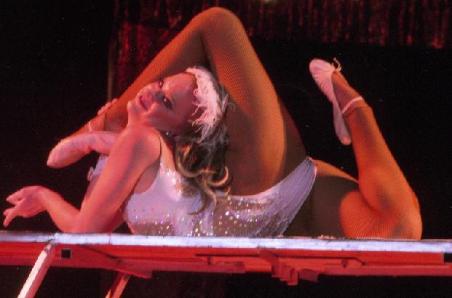
1. What is the difference between the normal handstand and contortion handstand?
How does it change the hand position taking into consideration that everybody has a different physiology (body)? What should one consider not to get injured?
Contortion handstands arms and fingers vary between positions. For triple fold press ups and Mexican handstands, it is easier if the contortionist has the arms wider than shoulder width. This is not, however recommended for normal contortion handstands where the artist will exchange into a one armed balance (handstand on one arm). For a normal handbalance and any exchanges into a single arm, it’s important to have hands and elbows directly underneath the shoulders. Because contortionists leave the chest down and legs over head for the majority of the positions, the legs over the head causes a lot more weight pushing forward, so it’s important that the fingers are pressing firmly into the ground to push back on. The palms can be flat or raised (2 different techniques for this), but knuckles in center of the fingers are usually slightly raised (how raised, will depend on the position and weight at the front).
2. What could one do in case of injury? What medicine and lotions do contortionists use? Where one can buy them online?
Any injuries should be reported to a doctor or specialist, if there is an injury to the spine, I would suggest not going to a physio until a specialist has cleared you or given you an MRI.
Before taking supplements, it’s important to first take a blood test and ID exactly which supplements your low on, as taking supplements you are already receiving sufficiently, can also create some serious health problems. Some of my favourites to take is Calcium and Magnesium for healthy bones and muscles, taking vitamin C with these will help your body to absorb them better. A diet that has a lot protein will aid in repairing your body after your training session. Drink a lot of water. Water hydrates your entire body and aids keeping your spine healthy. Fish oil is wonderful for bone health! Highly recommend, especially for adult contortionists.
3. What tips can you give starting contortionists to prevent injuries?
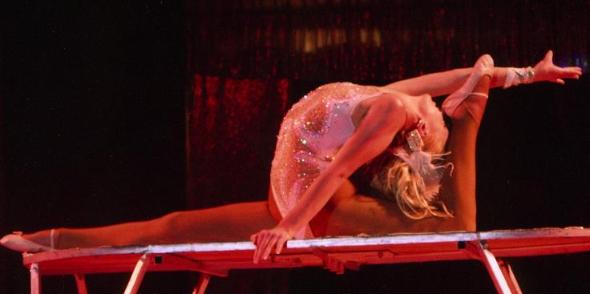
A long warm up of 1 hour is beneficial. Most injuries occur from contortionists not spending enough time getting their bodies ready for training. This includes cardio to warm your body up and get your blood flowing to all those joints.
Then followed by passive stretching, then active stretching and some strength exercises to get your muscles ready to fire, when you ask them. Cooling down is just as important as your warm up, during training, spend approx. 20 minutes cooling down, if you can. Absolute minimum would be 10 minutes after a long training session.
4. How to do a chest stand or pancake chest stand correctly? What is the right hand position in a chest stand?
What preparation exercises can you recommend?
Hand position in chest stand also varies based in the position being performed. For spider, where you run around your head, you want your arms to be folded behind you around your tummy to keep them out of the way. For a roll into the chest stand, you lay your arms straight behind you, but once you are in the position, you put your fingers slightly behind your shoulders and push your elbows in towards your body. Some positions will require different arm positions.
5. Is there a typical error in leg shouldering (Reaching the shoulder with the leg in the standing split)?
What is the correct way of doing it?
Ideally you want to work towards lifting it gently all the way up, when you are first learning it will be impossible to do this, so you can lift it with your hand, or do what we call a “back catch,” where you whip your leg up. It’s important when first learning to keep eyes forward, so you don’t give yourself a black eye, it also looks a lot nicer and lengthens the position. This is actually one of the most problematic tricks for contortionists. If you have not warmed up properly, not stretched to front, sides, back and warmed up twists, chances are that this position will eventually give you a sprained muscle, which in your back, can be excruciating, even worse, it can cause a hernia or two in your spine, which is not only painful, but can give you per many spinal damage. Always work left as much as right leg.
6. How to master an oversplit in a straddle split? When one can start working on an oversplit in the middle split?
I mean you if you need to get first into a perfect middle split or you can start working on an oversplit earlier and improve your middle split at the same time. Some exercises and tips.
Actually, I rarely work over split much in straddle. It’s not a position that we really need much as a contortionist and tends to cause problems with hips later on in life, if correct turn out position is not practiced. It’s also not the best thing to do for aerialists that hand from hand loops in the air, as the hip can dislocate if it is is too lax. I prefer to work on over split on left and right.
7. What is to take into consideration in a head sit position?
Head sit is a tricky pose. I would suggest mastering both breathing and all the shapes in a normal chest stand before trying to master the head sit. A head sit requires the artist to lift upwards and forwards. Many cannot do it, as they do not understand how to lift using both the pelvic floor muscles and outer core muscles correctly. Having a teacher will help you to get into the position the first few times.
8. How to get a deeper bend and head-to-butt in the front split?
I woke through grabbing back leg with opposite arm (important to have parallel hips with NO back leg turned out. You will know if you back knee is facing to the side, instead of to the ground. You can work this position through lunge, through regular split and in over split. It’s many of the same muscles being used as the Needle or back catch that we spoke about above, so again. Good warm up is important not to have an injury. Using the opposite, instead of same arm, helps to prevent from twisting out.
9. What tips can you give for a correct backward roll to handstand?
Do it with a teacher that understands the position first. There are many lead up skills to learn first before tying it, to help your brain understand each phase of the trick.
10. Some things to keep in mind in a triple fold position.
Breath, breath and breath some more. You need to not only have a comfortable bottom on your head for this position, but more so, you need very flexible shoulders and also hip flexors. Keeping hips open and opening legs wide enough to get your body through will make this easier.
11. Could you please give some advice and exercise tips for getting deeper back bends and strength for the upper, middle and lower back areas?
Firstly, patience, back bending when pushing yourself past your limits will more than often end in injury or you taking steps backwards. Spending time and breathing well in each pose, trying to relax is the best way. Strength exercises: there are many listed on my group. It’s a little too hard to explain all of this as written text. It’s better to use the images and videos on my site, as there are a lot of technical aspects to each exercise that is important to do things safely and correctly. I wouldn’t like somebody to be injured by not understanding what I write.
12. Where do you teach? Where one can book you and your company for a performance?
I teach from my home studio and also at Performance Art Western Sydney and Avion Aerial Arts in Sydney, Australia. I am also available for national and international workshops. My website is jasminestraga.com and I´m Director of Australian Circus Festival australiancircusfestival.org

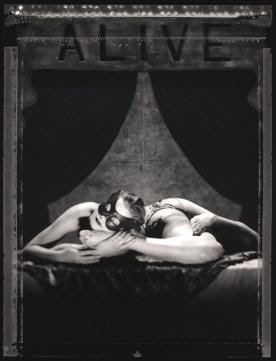


 Learn From the Master Trainer for XPERT Pole and Aerial Fitness
Learn From the Master Trainer for XPERT Pole and Aerial Fitness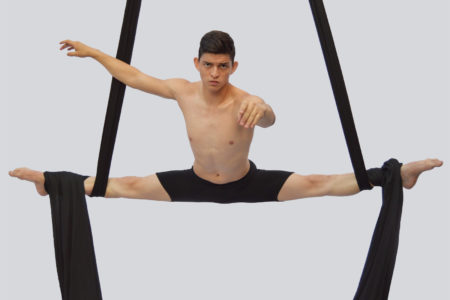 Interview with Iram Ramírez
Interview with Iram Ramírez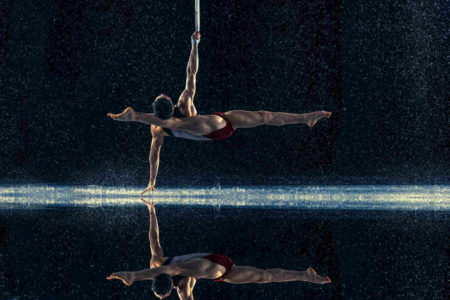 Interview with Brandon Scott
Interview with Brandon Scott